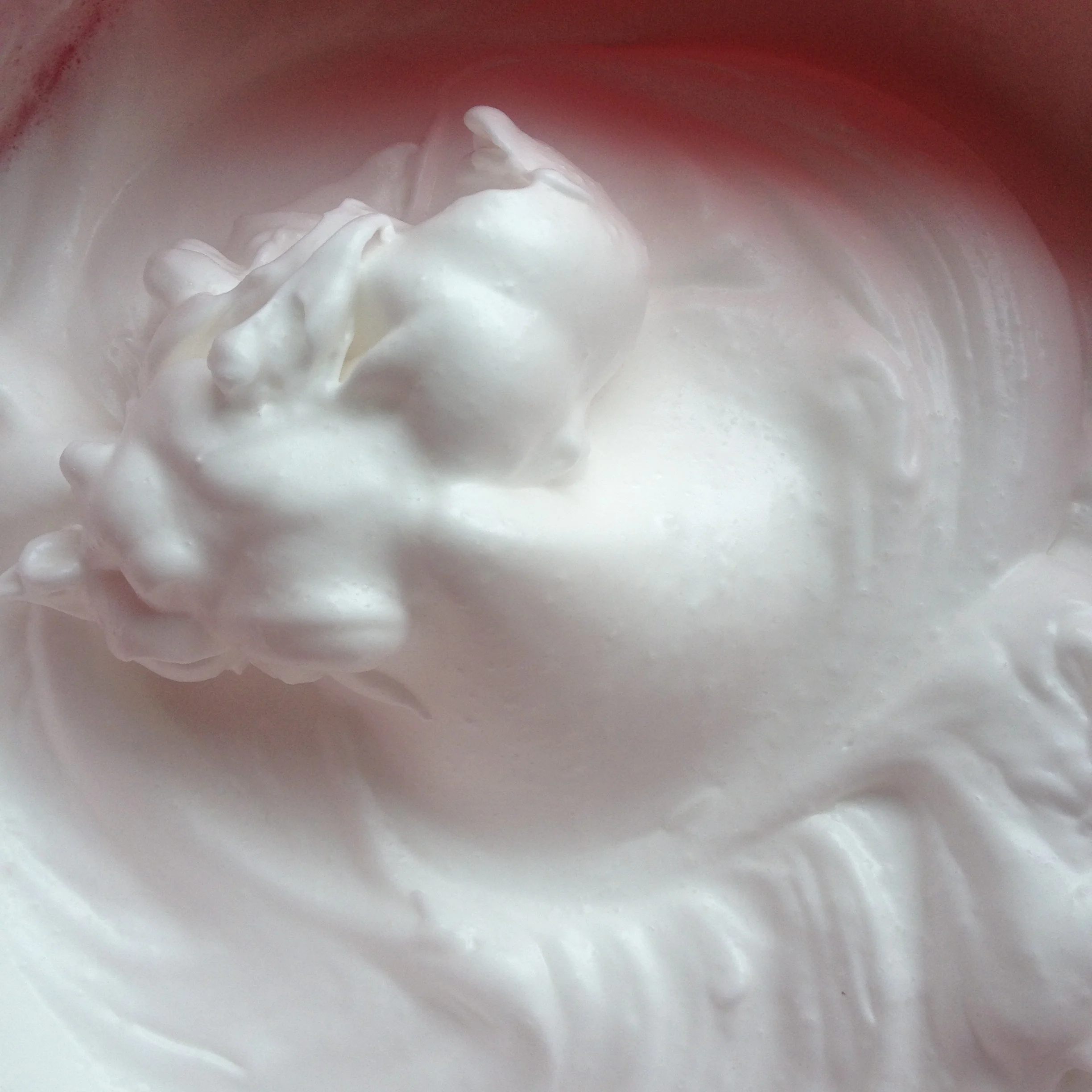“I love playing with plants and molecular ingredients to create unique plant-based cuisine that quenches our thirst for innovation, while retaining all the flavor and nutritional value. Zero woo-woo. Maximum fun!”
Here's a great example for you to try at home. It's a totally vegan and sugar-free meringue recipe that I developed from scratch.
Think about it - that's meringue made without any egg whites, and without any sugar! And it's extremely inexpensive to make, as the main ingredient is the liquid that's inside a can of chickpeas - yes, you read that correctly! It's known as 'aquafaba' (literally 'bean water'), and it's rich in fiber. This waste product can be transformed into a fabulous foam that's naturally binding, and can be used in many of my recipes as an egg replacement.
I am grateful to the French chef Joel Roessel and Goose Wohlt for discovering aquafaba, and for cooks who have played hide and seek with this wonderfully playful ingredient in the quest for the perfect no-sugar meringue recipe. The history of my recipe includes Jane Black's New York Times recipe for meringues made with refined sugar, to the many cooks attempting to combine the wonders of aquafaba in various sugar-free combinations.
The problem with aquafaba pavlovas made with refined sugar is that the structure flattens as it bakes. They go into the oven foamy and upright, and come out still delicious and with a great texture, but undeniably flatter, and more cookie-like to the eye if baked as separate meringues instead.
The problem with aquafaba pavlova and meringue recipes that don't use sugar is that the whole mass becomes a blob of disgusting gloop that's inedible...
Many misses went into producing this hit recipe!
This pavlova is stable in shape and texture, remains deliciously sweet, doesn't have any coolness or tainted flavor from the erythritol, has a pleasing texture, is light to the touch, retains its pure white appearance, and has a wonderful pavlova-shaped structure ready for a topping.
As such, my recipe forms the foundation for a number of plant-based, paleo, sugar-free meringue recipes that I've since developed including the medicinal and clean plant ingredients that are at the heart of my food philosophy, such as ashwaganda, reishi, turmeric, raw cacao, and cardamom. I've developed dipped versions, including meringues dipped in my signature raw vegan chocolate, and floral versions that include rose, neroli, and cherry plum blossoms.
I'm currently writing a new cookbook of 40 recipes, and it will include this recipe, but in another delicious variation that's as surprising as the base recipe. Excited that this book will be published in Spring 2018.
For now, it's my honor to share this recipe ahead of my new cookbook, so that the vegan community and wider plant-based, clean eating and molecular foodies can enjoy this wonderful discovery, developed as with all recipes since the beginning of time, using knowledge contributed throughout the ages.
Plants contain knowledge. Longue vie au pois chiche!
Vegan sugar-free Pavlova & Meringues
by Ysanne Spevack, The Conscious Cook
Ingredients:
- 2/3 cup unsalted organic aquafaba, i.e. the cooking liquid from a 15oz can of chickpeas
- 1/4 tsp cream of tartar
- 1/4 tsp guar gum
- 1/4 tsp versawhip 600K
- 1/2 tsp almond extract
- 1/4 cup cornstarch
- 1/4 cup / 1 1/2 oz / 35g organic erythritol (make sure it's organic), for example, Wholesome Sweeteners brand's Zero.
- 1 tbs organic maple sugar
Method:
- Set the oven to 250ºF / 130ºC / Gas Mark 1/2
- Line a large baking sheet with baking parchment or a silicon mat
- In a medium bowl, beat the aquafaba, cream of tartar, guar gum, versawhip and almond extract using an electric whisk on the highest setting
- Keep beating until the mixture is whipped to stiff glossy peaks, about five minutes
- Sift the cornstarch, erythritol and maple sugar into a small bowl, and mix together
- Slowly add the sweetener starch mixture one tablespoon at a time into the foam, still beating on high with the electric whisk
- After about one more minute, the ingredients will be combined, and the foam will be very stiff
- As a note - unlike egg whites, it's impossible to over-beat the aquafaba so don't hold back from whisking!
- Transfer half of the foam to the baking sheet, stacked as low in footprint surface area and as high as possible.
- Use a silicon spatula to transfer the rest of the foam into a piping bag with a large open star tip, e.g. Wilton 1M
- Transfer to the oven
- Bake for 2 hours at this setting, then turn down the heat to 200ºF / 100ºC / Gas Mark 1/4 and leave to finish drying for at another hour
- Leave to cool in the warm oven for another 1-2 hours
- Remove from the oven and serve immediately with whipped coconut créme and macerated strawberries, noting that it will start to moisten, so needs to be enjoyed immediately after it's topped and ready to serve
N.B. Please contact me with any questions or requests to share and reprint, my contact details are at the bottom of this page. Thank you, and enjoy!
Image: Ysanne Spevack, May 2016
Image: Ysanne Spevack, May 2016



